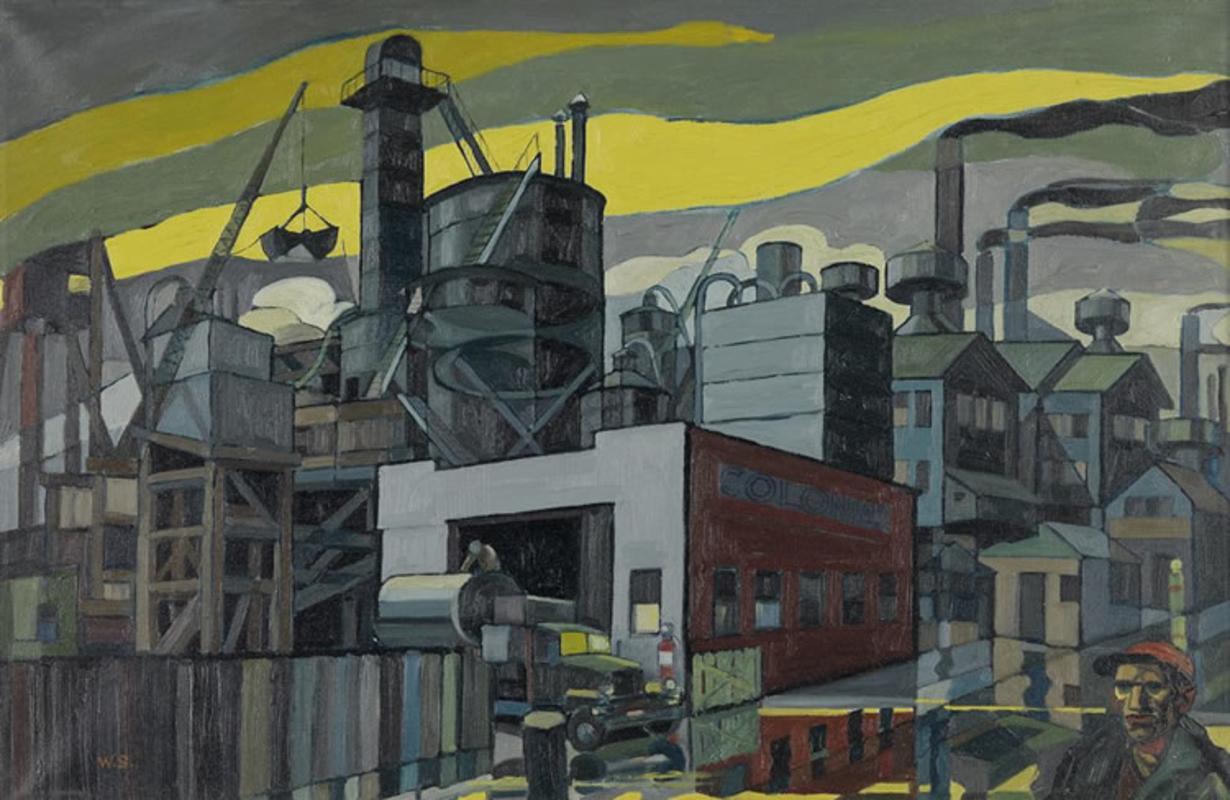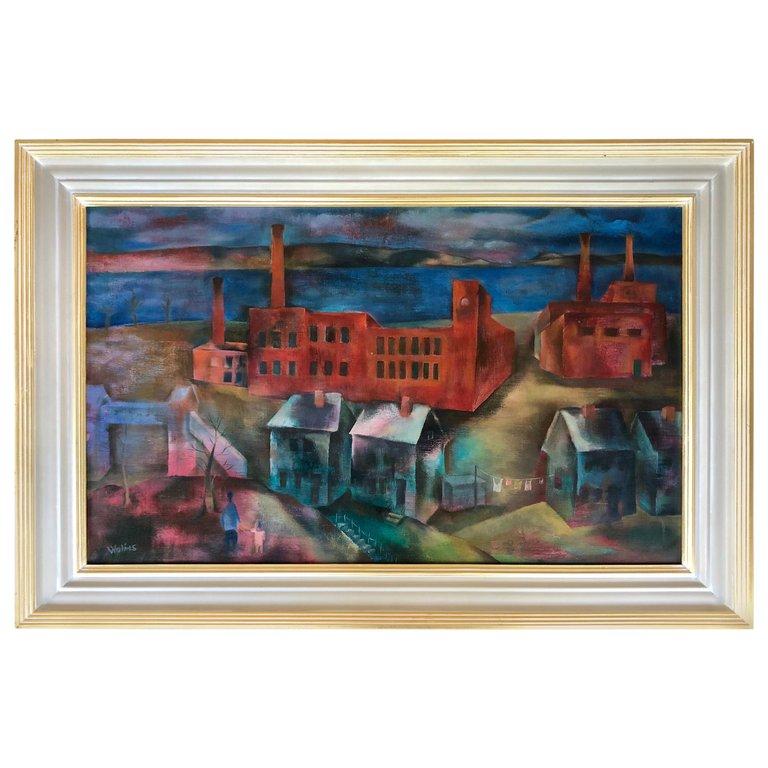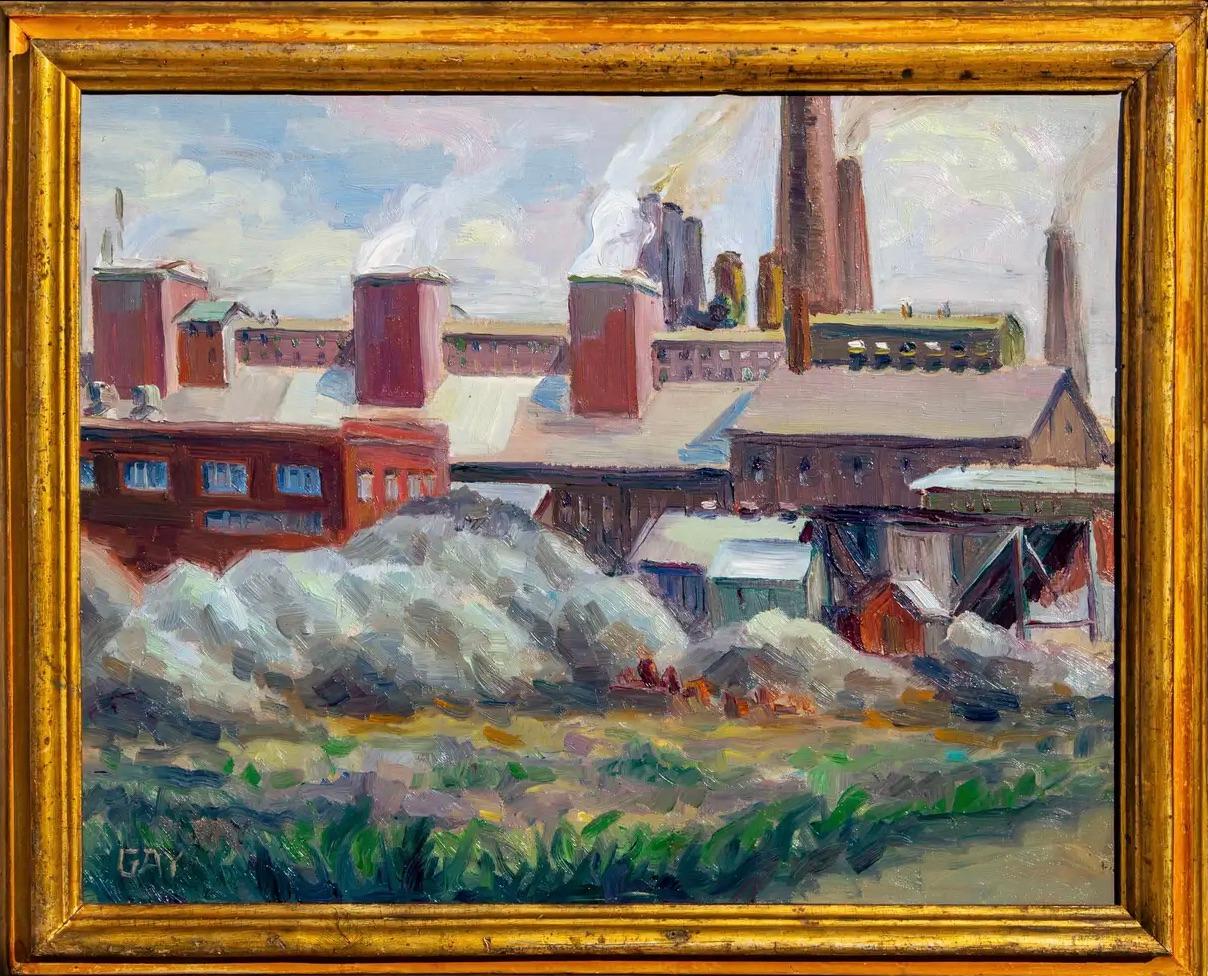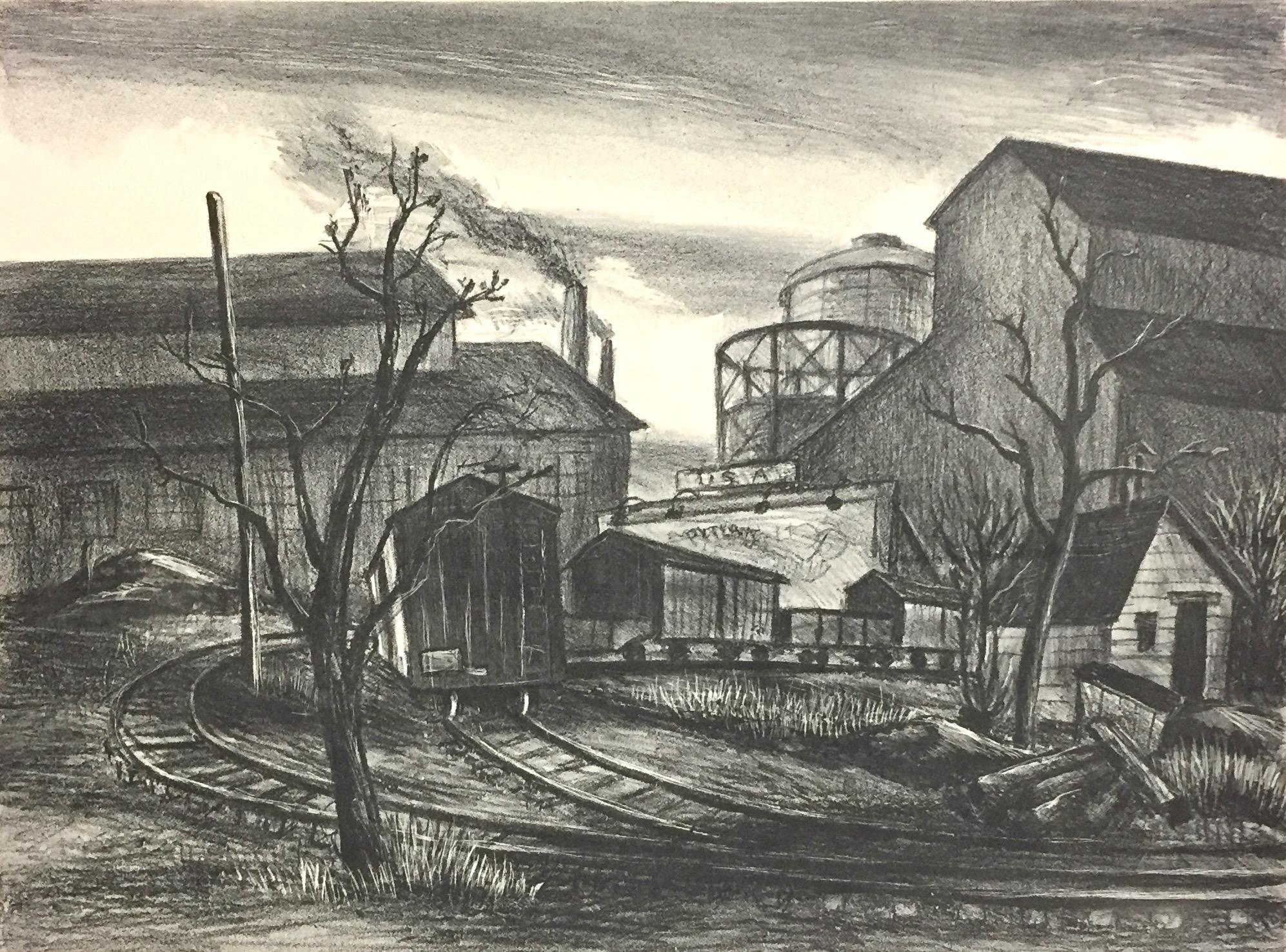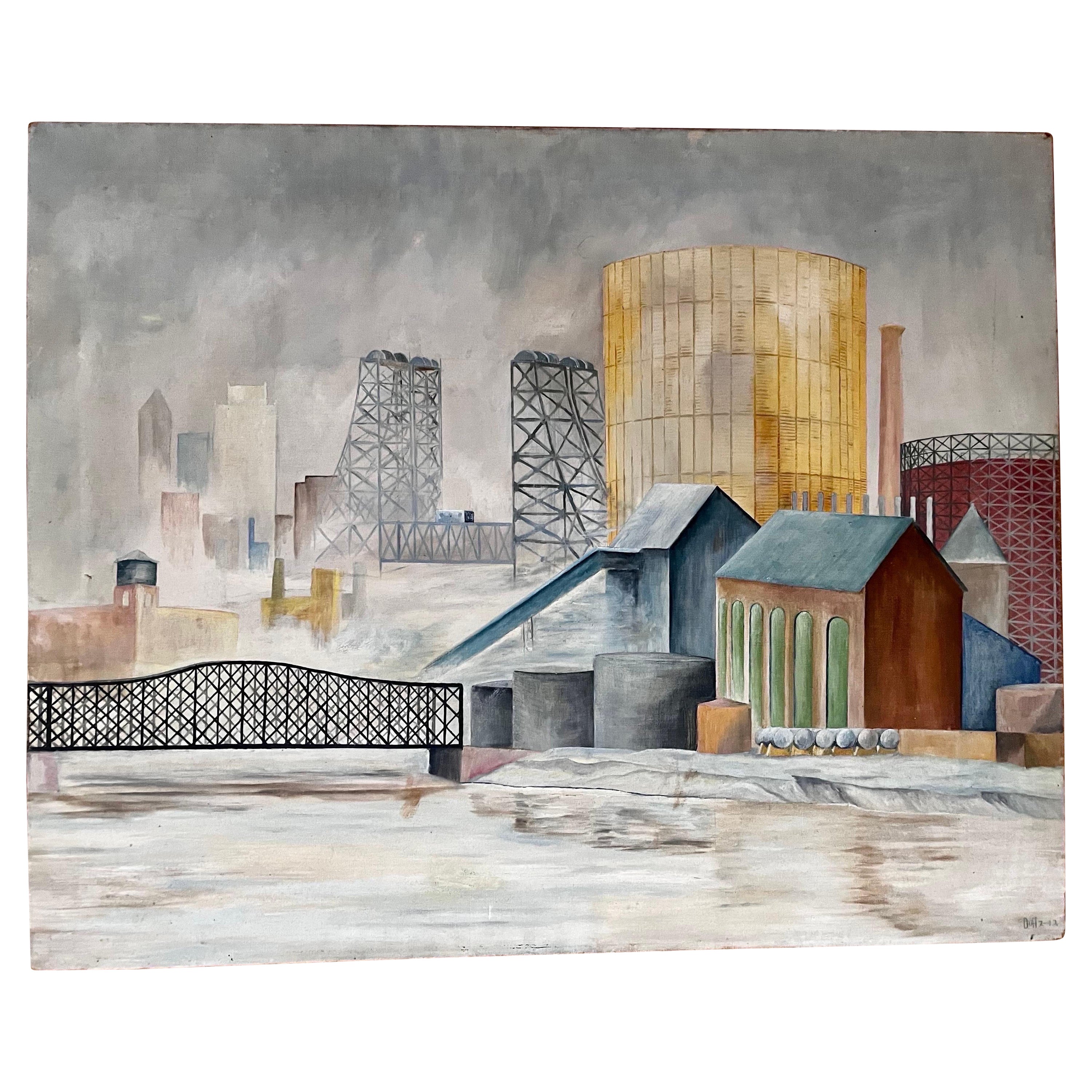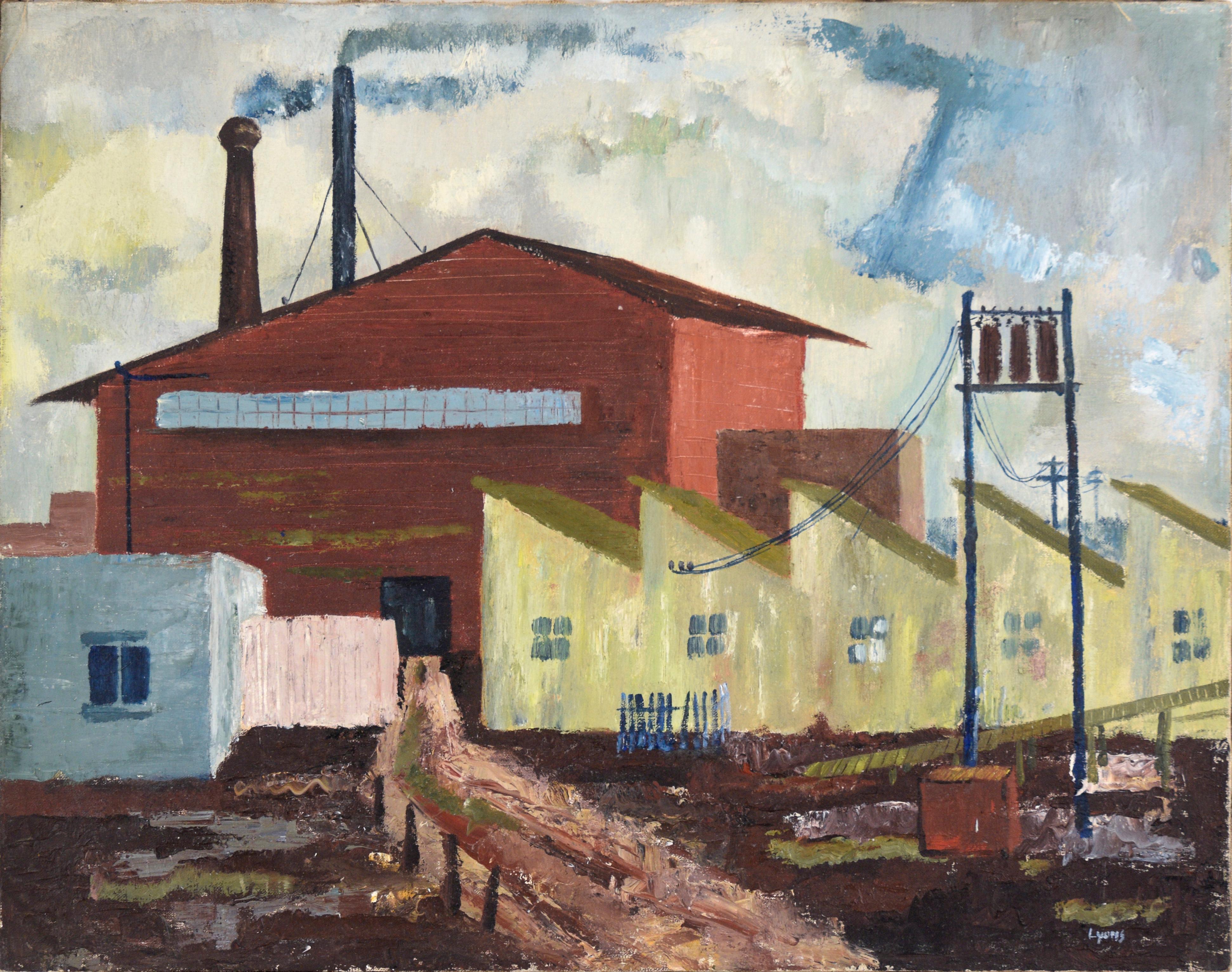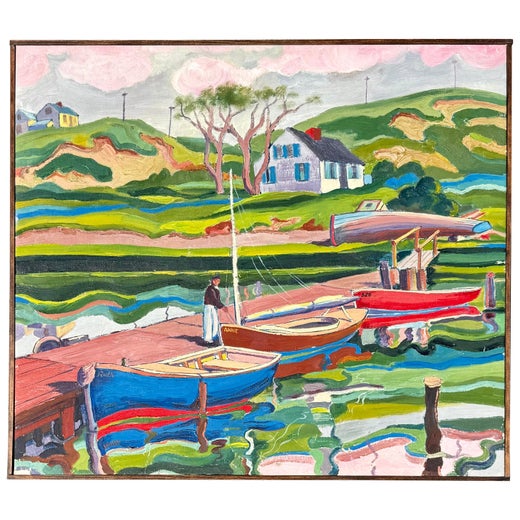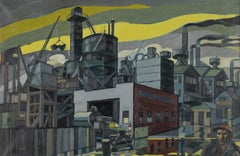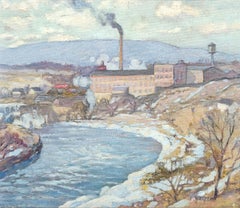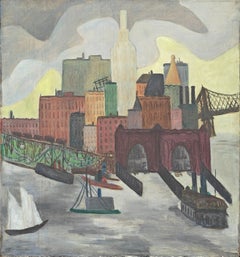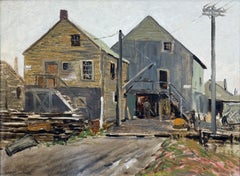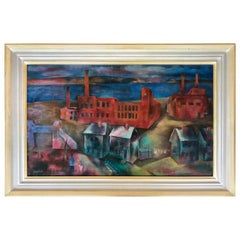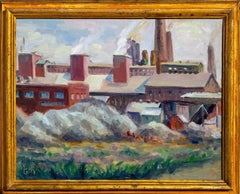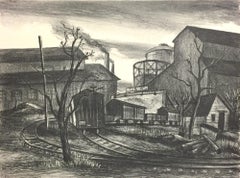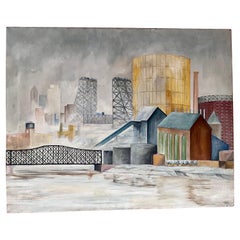William Sharp"Factory on the River" Modernist and Precisionist WPA Industrial New York Scene
About the Item
- Creator:William Sharp (1900 - 1961)
- Dimensions:Height: 17.5 in (44.45 cm)Width: 23.25 in (59.06 cm)
- Medium:
- Movement & Style:
- Period:
- Condition:Excellent. Framed.
- Gallery Location:New York, NY
- Reference Number:1stDibs: LU184129920342
William Sharp
William Sharp was born on June 13, 1900, in Lemberg, Austria, where he attended college and the Academy for Arts and Industry. He later studied in Kraków, Poland, Berlin and Munich. Sharp began his career as a designer of stained-glass windows and as a painter of murals. He served in the German army during World War I. After the war, he became a newspaper artist in Berlin and a well-known etcher. Sharp drew political cartoons that were bitterly critical of the growing Nazi movement. As the influence of National Socialism intensified, he began to contribute drawings, under a pseudonym, to publications that were hostile to Hitler. After Hitler assumed power, Sharp was confronted with these drawings and told that he would be sent to a concentration camp. However, in 1934, he escaped to the United States. His first newspaper assignment in America was making courtroom sketches for The New York Mirror at the trial of Bruno R. Hauptmann for the kidnapping of the Lindbergh baby. As a staff artist at Esquire, where he continued to produce political cartoons, Sharp also illustrated stories by Ernest Hemingway and Thomas Mann. He was a longtime contributor to The New York Times magazine and also worked for LIFE magazine, Collier's magazine, Coronet and The New York Post. Sharp also did book illustrations for several leading publishers, with Dickens’s, The Old Curiosity Shop for Heritage Press being his first assignment. He illustrated several books for limited editions, including The Diary of Samuel Pepys in 10 volumes. Sharp published several portfolios of etchings and lithographs about the legal and medical professions. Sharp's precisionist work is represented in many museums, including the Metropolitan Museum of Art, the Queens Museum, the Library of Congress, the Carnegie Institute and the New York Public Library. William Sharp died in New York City on April 1, 1961.
- ShippingRetrieving quote...Shipping from: New York, NY
- Return Policy
More From This Seller
View AllMid-20th Century American Realist Landscape Paintings
Canvas, Paint, Oil
Early 20th Century American Impressionist Figurative Paintings
Canvas, Oil, Board
1920s American Modern Figurative Paintings
Canvas, Oil
1930s American Impressionist Figurative Paintings
Oil, Panel
1940s American Modern Figurative Paintings
Oil, Board
1940s American Modern Figurative Paintings
Oil, Board
You May Also Like
1950s Post-War Landscape Paintings
Oil
1930s American Modern Landscape Paintings
Oil, Canvas
1930s Ashcan School Landscape Prints
Lithograph
Vintage 1940s American Industrial Paintings
Paint
1960s American Impressionist Landscape Paintings
Linen, Oil
1960s American Impressionist Landscape Paintings
Linen, Oil
